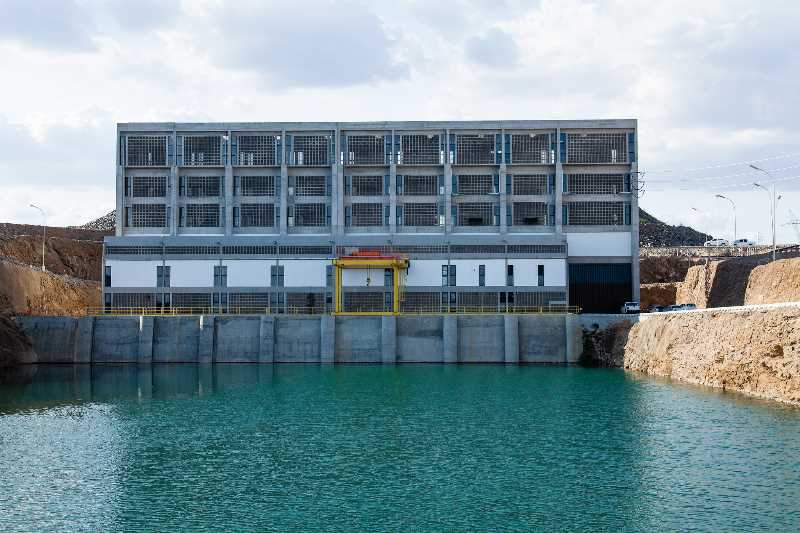
Há 150 anos, um político do Ceará propôs usar a água do Rio São Francisco para combater a seca no Nordeste. A ideia foi aprovada pelo imperador Dom Pedro 2º e, desde então, virou uma verdade popular que essa boa ideia jamais sairia do papel. Mas ela está se tornando uma realidade que vai beneficiar 12 milhões de brasileiros, segundo estimou o governo federal.
Lula, o iniciador, Dilma, a que deu continuidade, e Temer que vai entregar para o povo.
A oba foi iniciada em 2007 com um valor orçado de R$ 4,5 bilhões, hoje dobrou essa quantia que pode chegar a R$ 10 bi. Temer disse que entrega no máximo em setembro deste anos. Já existem trechos que necessitam de conserto, e qual empresa cuidará disso? Terá superfaturamento?
A evolução do Projeto de Integração do São Francisco é grandioso. São 477 quilômetros de canais, 9 estações de bombeamento como esta, 27 reservatórios, 4 túneis e 14 aquedutos. Para vocês terem uma ideia, 12 milhões [de pessoas que a obra vai beneficiar] é mais do que a população do Paraguai e do Uruguai somadas.
Mais de três mil equipamentos estão em operação na área. Junto a cada uma das 9 estações de bombeamento, haverá uma subestação de energia, que fará a elevação da água a 36 metros, para que possa correr nos canais. Essa obra não é só o canal. É também a estação de bombeamento, que tira a água daqui, do nível do rio, e leva lá para cima usando energia elétrica. Essa estação tem12 metros, significa que a água sai daqui e, como se entrasse num elevador, sobe 36 metros e entra no canal.
Cerca de 80 mil pessoas serão beneficiadas nas pequenas comunidades que vivem em torno dos canais “São comunidades de agricultores, de pequenos agricultores rurais, de assentados da reforma agrária, populações quilombolas e população indígena.



VEJA CANAL NA ALEMANHA E SEU GASTO
Magdeburg Water Bridge – Germany
Magdeburg Water Bridge – Germany
Six years, 500 million euros, 918 meters long…….now this is engineering!
This is a channel-bridge over the River Elbe and joins the former East and West Germany, as part of the unification project. It is located in the city of Magdeburg, near Berlin.
Read on to check if your answer is correct:
This is a channel-bridge over the River Elbe and joins the former East and West Germany, as part of the unification project. It is located in the city of Magdeburg, near Berlin.
To those who appreciate engineering projects, here’s a puzzle for you armchair engineers and physicists. Did that bridge have to be designed to withstand the additional weight of ship and barge traffic, or just the weight of the water?
Read on to check if your answer is correct:
It only needs to be designed to withstand the weight of the water!
The Magdeburg Water Bridge is a navigable aqueduct in Germany, opened in October 2003. It connects the Elbe-Havel Canal to the Mittellandkanal, crossing over the Elbe River. It is notable for being the longest navigable aqueduct in the world, with a total length of 918 metres (3,012 ft). The Elbe-Havel and Mittelland canals had previously met near Magdeburg but on opposite sides of the Elbe, which was at a significantly lower elevation than the two canals. Ships moving between the two had to make a 12-kilometre (7.5 mi) detour, descending from the Mittelland Canal through the Rothensee boat lift into the Elbe, and then sailing downstream on the river, before ascending up to the Elbe-Havel Canal through Niegripp lock. Low water levels in the Elbe often prevented fully laden canal barges from making this crossing, requiring time-consuming off-loading of cargo.
HISTORY
Canal engineers had first conceived of joining the two waterways as far back as 1919, and by 1938 the Rothensee boat lift and bridge anchors were in place, but construction was postponed during World War II. After the Cold War split Germany, the project was put on hold indefinitely by the East German government. The reunification of Germany and establishment of major water transport routes made the Water Bridge a priority again. Work started in 1997, with construction taking six years and costing €500 million. The water bridge now connects Berlin’s inland harbour network with the ports along the Rhine River. The aqueduct’s trough structure incorporates 24,000 tonnes of steel and 68,000 cubic meters of concrete.
LOCKS
In addition to the bridge, a double lock was constructed to allow vessels to descend from the level of the bridge and Mittelland Canal to that of the Elbe-Havel Canal.Additionally a single lock was constructed at Rothensee to allow vessels to descend from the bridge level to the Elbe and the Magdeburg harbour. This lock is parallel to, and replaces the Rothensee boat lift, and can accommodate larger vessels than the lift.




Nenhum comentário:
Postar um comentário